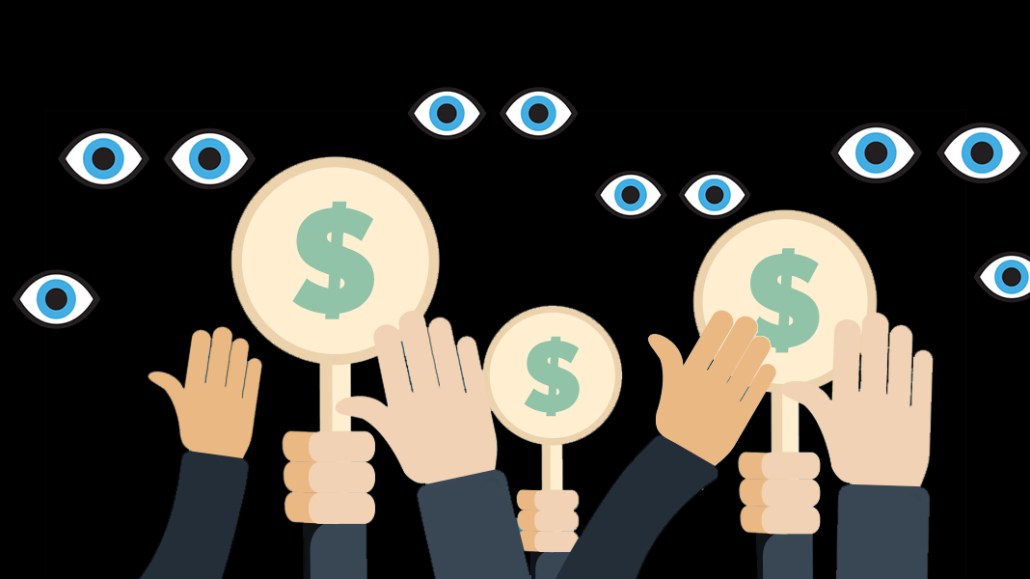‘Unknown delta’: Advertisers push again for transparency in programmatic ad buying

Ad spending is falling, leading advertisers to again seek to greater transparency into the ad-buying supply chain.
Nearly half (49%) of ad buys evaporate before reaching publishers, according to a report from trade body ISBA. More than a third (34%) of this money is the disclosed fees agencies and ad tech vendors take for trading impressions, while 15% is swallowed up by what the report called an “unknown delta” on the supply chain that could not be attributed. The amount of money that reaches publishers is likely lower, as the report did not factor in ad fraud and ad viewability.
Not only is there still a noticeable amount of programmatic dollars that aren’t reaching publishers, but it’s also getting harder to keep track of where it does go. ISBA tried to do this in the report but struggled to get the data it needed from ad tech vendors for nine months. And when the trade body did, a large portion of the data was unusable.
Data on 267 million impressions traded between 15 advertisers, eight agencies, five demand-side platforms, six supply-side platforms and 12 publishers from the Association of Online Publishers from Jan. 1 to 20. March was collected by PwC for the study. Of those impressions, only 31 million (12%) were actually analyzed by matching log-level and aggregated data across 290 different supply chains.
Getting access to that data, particularly on each impression, was harder and more cumbersome than expected, said Sam Tomlinson, marketing assurance partner at PwC. Often, his team had difficulties getting ad tech vendors to part with the data given the widespread non-disclosure agreements. And even when PwC did get the data it was often in different formats that made it hard to trace an advertiser’s money back to so many different publishers. The advertisers involved in the study appeared on an average of 40,525 sites, most being non-premium.
While the concept of following a winning bid through to those sites seems straightforward, the execution isn’t.
An advertiser or agency uses a DSP to decide which impressions to buy and how much to pay for them, while publishers use a SSP to sell that inventory to advertisers. Data on those impressions from those two platforms are then matched up, which is what PwC did with as many as it could. Even then the data couldn’t give either the advertisers or publishers involved in the study the ultimate financial transparency they wanted. There were still costs in the so-called “unknown delta” that couldn’t be identified in the report, for example. Those hidden fees could be a combination of additional ad tech vendor fees, post-auction bid shading, trading deals and other unknown factors.
Ad position: web_incontent_pos1
“This is more because the programmatic ecosystem is built on legacy processes that are a mess,” said Tomlinson.
“We desperately need to see a common set of standards adopted and more openness in this market, so that every penny spent is accounted for,” said Graeme Adams, head of media at BT Group, which was part of the study. “If this happens, we’ll invest more in the channel; if not, we will cut back and reshape our trading approaches.”
Part of the problem is expense. It costs more than £1 million ($1.2 million) to collect, normalize and process the data from all those disparate sources in ISBA’s study, for example. The other issue stems from how hard marketers believe transparency is to get when so much emphasis is placed on attaining log-file data. If ISBA’s report proves anything it’s that log file data can reveal everything about transparency in programmatic and nothing at the same time.
“Using the overly sophisticated approach of trying to match log-file data in real-time is like buying the IBM Watson supercomputer to calculate 1+1,” said Ruben Schreurs, managing partner at digital media consulting firm Digital Decisions.
Advertisers can take a much more “sensible and efficient” approach by running periodic reviews of their net spend on top publisher partners, and matching this with the publisher data at an aggregate level, he added.
Ad position: web_incontent_pos2
“This provides exactly the right output that’s needed to make informed and value-driven decisions around how to optimize the supply chain,” said Schreurs. “We as an industry need to stop pushing unnecessary complex technological solutions to straightforward problems.”
Nevertheless, the report’s findings could give the ad tech industry added incentive to improve financial and data transparency on impressions as the specter of regulation looms.
“If the ad industry can be seen to be demonstrating that we can create a more open and transparent market then it could avoid the necessity of being regulated,” said Steve Chester, director of media and advertising at ISBA.
More in Media

NewFronts Briefing: Samsung, Condé Nast, Roku focus presentations on new ad formats and category-specific inventory
Day two of IAB’s NewFronts featured presentations from Samsung, Condé Nast and Roku, highlighting new partnerships, ad formats and inventory, as well as new AI capabilities.

The Athletic to raise ad prices as it paces to hit 3 million newsletter subscribers
The New York Times’ sports site The Athletic is about to hit 3 million total newsletter subscribers. It plans to raise ad prices as as a result of this nearly 20% year over year increase.

NewFronts Briefing: Google, Vizio and news publishers pitch marketers with new ad offerings and range of content categories
Day one of the 2024 IAB NewFronts featured presentations from Google and Vizio, as well as a spotlight on news publishers.
Ad position: web_bfu
